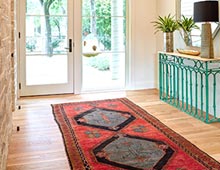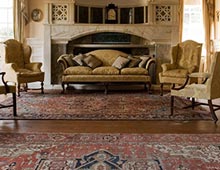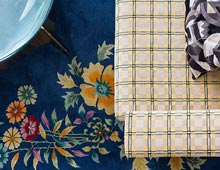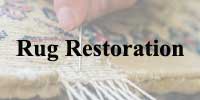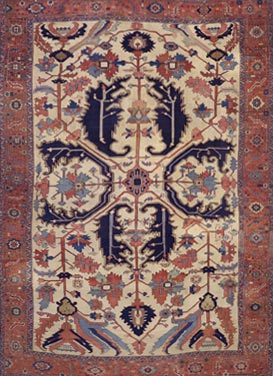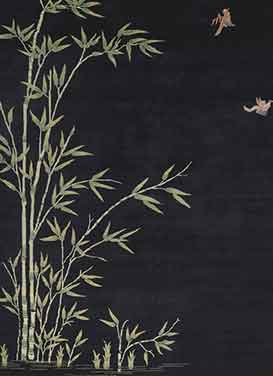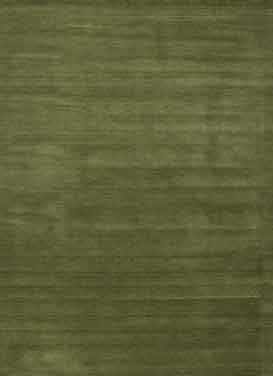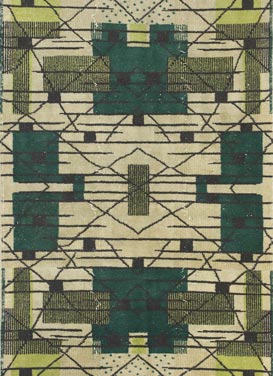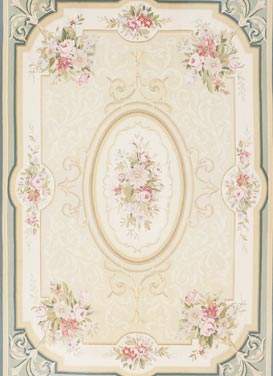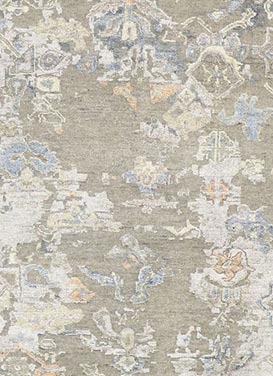
Antique Rugs: A Journey Through Time and Artistry
In the world of interior design, few elements possess the timeless charm and artistic significance of antique rugs. As a third-generation rug dealer, I've witnessed the transformative power of these masterpieces. Join me on a journey through the enchanting world of antique rugs, where history, craftsmanship, and culture are woven into every thread.
Discovering Antique Rugs: Artistry Preserved in Time
Antique Rugs: A Tapestry of History
Antique rugs are more than floor coverings; they are living relics of history. To be classified as antique, a rug must be over 100 years old, and this age imparts a unique character and historical significance. Each antique rug has a story to tell, a narrative of the era it hails from, and the hands that meticulously crafted it.
The Enchanting Palette of Antique Rugs
The colors adorning antique rugs are a testament to nature's bounty. Unlike modern synthetic dyes, these rugs are dyed using natural sources such as plants, insects, and minerals. This natural approach gives rise to a rich and vibrant color palette that evolves gracefully with time. As the years pass, the colors mellow, creating a distinct patina that enhances their beauty.
Deep, resplendent reds, serene blues, earthy greens, and warm golds are just a few of the hues that adorn antique rugs. These colors are not chosen arbitrarily; they bear the echoes of a bygone era, reflecting the aesthetics and sensibilities of the culture and region where they were crafted.
Patterns That Speak Volumes: The Artistic Language of Antique Rugs
Antique Rug Patterns: A Cultural Mosaic
Patterns in antique rugs are a visual language that communicates the heritage and culture of their origin. Each region has its unique design motifs, passed down through generations. Persian rugs, for example, boast intricate floral patterns and geometric designs, while Moroccan rugs feature tribal symbols and abstract shapes.
The patterns on antique rugs often carry symbolic meanings deeply rooted in tradition. Medallions, for instance, are a common motif symbolizing harmony and unity. Dragon motifs in Chinese antique rugs represent power and protection, while the Tree of Life signifies growth and fertility.
Stories Woven in Threads: The Symbology Behind Patterns
Every element of an antique rug's design has a story to tell. The repetitive geometric patterns are not just visually pleasing but also serve a purpose. They are believed to ward off evil spirits and bring order and balance to the surroundings.
Floral motifs, found in abundance on antique rugs, symbolize the natural world and its cycles of growth and renewal. Animals and birds, often depicted in the patterns, carry their own symbolism, representing various virtues such as strength, wisdom, and freedom.
Investing in Timeless Elegance: The Value of Antique Rugs
Antique Rugs: More Than Decor, an Investment
Investing in antique rugs goes beyond enhancing your living space; it's an investment in history, culture, and artistry. The value of an antique rug is determined by a combination of factors, including its origin, condition, rarity, and aesthetic appeal.
Persian rugs, renowned for their craftsmanship and intricate designs, often command the highest prices. Additionally, rugs that have been well-preserved, with vibrant colors and minimal wear, tend to have higher value. Unique designs, larger sizes, and historical significance further contribute to a rug's worth.
Preserving Value: Caring for Your Antique Rug
To protect the value and beauty of your antique rug, proper care is essential. Regular vacuuming helps prevent dust and dirt from accumulating in the fibers. Rotating the rug periodically ensures even wear, and professional cleaning every few years can rejuvenate its appearance.
Keep your antique rug away from direct sunlight, as prolonged exposure can cause fading. Avoid placing it in damp areas to prevent damage. With proper care, your antique rug can continue to appreciate in value while gracing your home with its timeless elegance.
Antique Rugs: A Lasting Legacy
In the world of interior design, antique rugs are more than decorative pieces; they are an embodiment of history, culture, and artistry. Each rug tells a story that transcends time, and owning one is like owning a piece of living history. As a third-generation rug dealer, I've witnessed how these masterpieces transform spaces and elevate the ambiance of any room.
When you invest in an antique rug, you're not just acquiring a piece of decor; you're preserving a legacy for generations to come. The colors, patterns, and symbology of antique rugs are a visual testament to the rich tapestry of human creativity and craftsmanship.
As you explore the world of antique rugs, may you find the perfect piece that resonates with your soul and adds a touch of timeless elegance to your home. Whether it's the intricate patterns, the vibrant colors, or the historical significance that draws you in, antique rugs have a way of captivating hearts and leaving a lasting legacy in the world of interior design.
Things to Know About Antique Rugs:
How do I know if my antique rug is valuable?
Determining the value of an antique rug involves several key factors. These include its origin, condition, rarity, and aesthetic appeal. Persian rugs are often the most valuable due to their renowned craftsmanship and intricate designs. Additionally, rugs that are well-preserved, with vibrant colors and minimal wear, tend to have higher value. Unusual designs or motifs, along with larger sizes, can also contribute to a rug's value as they make it more unique and sought after.
How do I know what antique rug I have?
Identifying the specific type or origin of an antique rug can be a complex task, but there are several methods to help you pinpoint its characteristics. First, examine the design and patterns closely, as different regions and cultures have distinct styles. Look for any tags or labels on the rug that may provide information about its origin. Consulting with experts or reputable dealers can also be invaluable in determining the identity and provenance of your antique rug.
What is the difference between antique and vintage rugs?
The primary difference between antique and vintage rugs is their age. Antique rugs are typically at least 100 years old, while vintage rugs fall into the age range of 20 to 50 years. This age distinction is significant, as it affects not only the value but also the overall aesthetic and cultural context of the rug. Antique rugs have a greater historical and artistic significance due to their long history.
Why are antique rugs so expensive?
Antique rugs can be expensive for several reasons. First and foremost, their age and rarity make them highly sought after by collectors and enthusiasts. Additionally, the craftsmanship and intricate designs found in many antique rugs contribute to their value. The use of natural dyes, which can create unique and vibrant colors that age beautifully, adds to their appeal. Finally, the cultural and historical significance of antique rugs, especially Persian rugs, further drives up their price.
What age is an antique rug?
An antique rug is typically considered to be at least 100 years old. This age criterion sets antique rugs apart from vintage and newer rugs, emphasizing their historical significance and craftsmanship.
How do you date an antique rug?
Dating an antique rug involves examining various characteristics. One method is to look at the number of knots per square inch (KPSI), as modern rugs tend to have a higher KPSI due to modern construction methods. Additionally, inspecting the design, motifs, and color palette can provide clues about the rug's era and region of origin. Consulting with experts or appraisers can help refine the dating process.
What makes an antique rug valuable?
The value of an antique rug is determined by a combination of factors. These factors include its origin, condition, rarity, and aesthetic appeal. Persian rugs, for example, are often more valuable due to their renowned craftsmanship and intricate designs. A rug that has been well-preserved with minimal wear and vibrant colors is likely to have higher value. Additionally, unique designs, larger sizes, and historical significance can all contribute to the value of an antique rug.
How can you tell if an antique rug is high quality?
Determining the quality of an antique rug involves a careful examination of its craftsmanship and materials. Here are some key indicators of a high-quality antique rug:
- Knot Density: A high number of knots per square inch (KPSI) is a sign of fine craftsmanship. Higher KPSI often indicates a finer and more detailed design. Each country of origin has a traditional knot count specific to that area. For example, a medium knot count of 200 kpsi might be the finest weaving from a nomadic tribe. In turn, a high knot count of 1000 kpsi for a fine Persian city rug may not necessarily be the finest for that area, as the finest rug from the area may normally be 2000 kpsi. Therefore, purely counting knots of the rug is not a good indication of its quality or value.
- Material: Antique rugs made from natural materials like wool and silk are typically of higher quality. These materials age beautifully and have a luxurious feel.
- Dyeing Techniques: Antique rugs with natural dyes are highly regarded for their rich and vibrant colors. Look for variations in color that result from natural dyeing processes.
- Design Precision: Well-executed and intricate designs with precise detailing are indicative of a high-quality antique rug.
- Even Wear: A high-quality antique rug should exhibit even wear without significant damage like holes or tears.
- Authenticity: Ensuring that the rug is authentically crafted using traditional techniques is essential for assessing its quality. Consulting experts can help in verifying authenticity.
These qualities collectively contribute to the overall quality and value of an antique rug, making it a timeless and valuable addition to any space.

